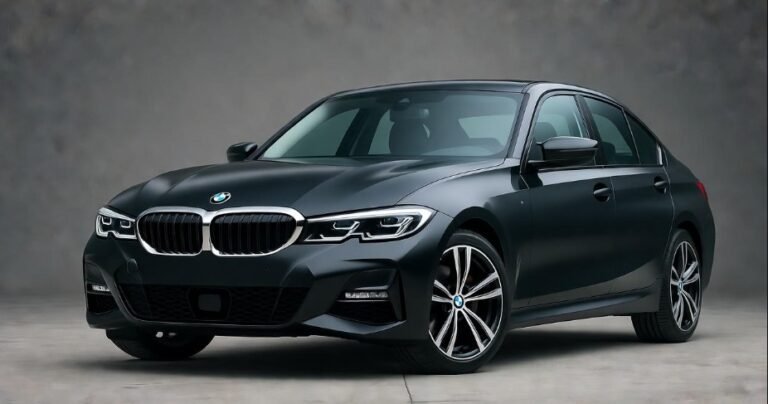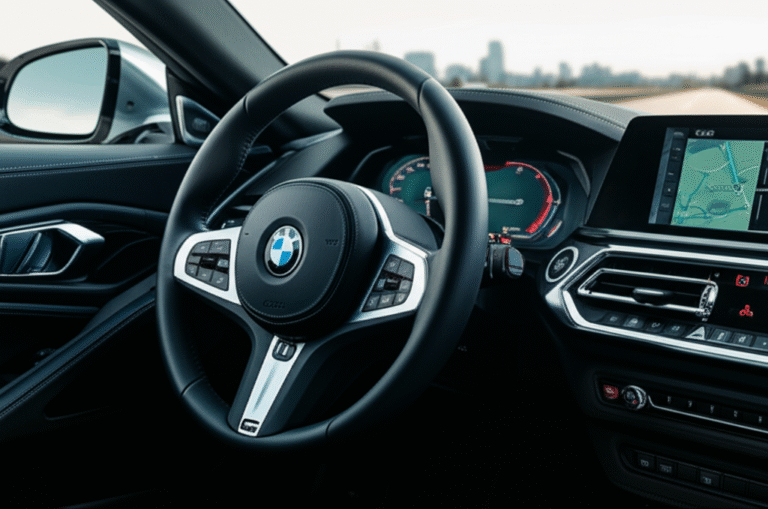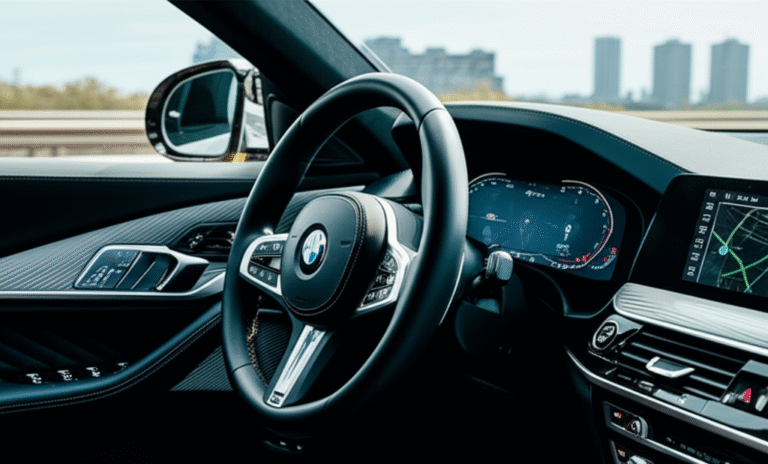BMW G310R Fuel Economy: 7 Amazing Facts
The BMW G 310 R offers impressive fuel economy, making it a smart choice for riders prioritizing efficiency and affordability. Discover 7 key facts about its fuel efficiency.
Key Takeaways
- Achieve excellent mileage on your BMW G 310 R.
- Understand factors impacting your G 310 R’s MPG.
- Learn maintenance tips for optimal fuel consumption.
- Compare its efficiency against similar bikes.
- Discover how riding style affects your BMW’s gas mileage.
- Maximize your range and save money on fuel.
The BMW G 310 R is a popular choice for new riders and urban commuters alike, and for good reason. It blends BMW’s reputation for quality with accessible performance. One of the biggest questions for any rider, especially when looking at a smaller displacement motorcycle like the G 310 R, is about its fuel economy. How far can you go on a tank? Will it break the bank at the pump? We’re here to break down the BMW G 310 R fuel economy and share 7 amazing facts that will have you looking forward to your next ride.
Understanding your motorcycle’s fuel consumption is crucial for planning longer trips and managing your budget. It’s not just about the sticker numbers; real-world performance can vary. This guide will demystify the BMW G 310 R’s miles per gallon (MPG) and provide you with the knowledge to maximize your efficiency. Get ready to discover just how economical this spirited machine truly is.
BMW G 310 R Fuel Economy: Unpacking the Numbers
When we talk about fuel economy, we’re essentially discussing how many miles a vehicle can travel on one gallon of fuel. For motorcycles like the BMW G 310 R, this figure is often a significant selling point, especially for riders who use their bikes for daily commuting or enjoy long-distance touring without constant refueling stops. The G 310 R, being a lightweight and nimble machine, is designed with efficiency in mind to complement its sporty yet practical performance.
The manufacturer’s estimated MPG is a starting point, but real-world results can differ based on a multitude of factors. This section will delve into what those numbers typically are and why they are so impressive for a motorcycle of this class. Understanding these figures helps you set realistic expectations for your ride and appreciate the economical aspect of owning a G 310 R.
Fact 1: Impressive MPG Ratings for a Premium Lightweight
The BMW G 310 R consistently earns praise for its outstanding fuel economy, a testament to its efficient 313cc liquid-cooled engine. While official figures can vary slightly based on testing cycles and regional specifications, most sources and owner reports place the BMW G 310 R’s fuel economy in the impressive range of 70-75 miles per gallon (MPG). This statistic is particularly noteworthy when considering it’s a product from a premium brand like BMW, known for its engineering prowess.
This level of efficiency means riders can enjoy extended journeys without the constant worry of refueling. For commuters navigating the bustling streets of American cities or those simply looking for an economical way to explore scenic routes, this MPG rating translates directly into significant cost savings over time. It also aligns with the growing trend towards more fuel-conscious and environmentally friendly transportation options that don’t compromise on the riding experience.
Fact 2: Understanding the 313cc Engine’s Efficiency
At the heart of the G 310 R’s exceptional fuel economy is its single-cylinder, 313cc engine. This engine is engineered with modern technology to optimize combustion and minimize fuel waste. Features like electronic fuel injection ensure that the precise amount of fuel is delivered to the engine based on throttle input and operating conditions, leading to more complete combustion and better mileage. The engine’s relatively small displacement also means it doesn’t require a large amount of fuel to operate efficiently.
The design also incorporates a backward-tilted cylinder to create a more balanced weight distribution, contributing to better handling, but also indirectly to efficiency by allowing for a more compact and aerodynamically favorable layout. BMW’s commitment to fine-tuning these components ensures that the rider benefits from a responsive engine that is also easy on the wallet when it comes to fuel consumption.
Fact 3: Riding Style Significantly Impacts Your G 310 R’s MPG
While the G 310 R is inherently fuel-efficient, your individual riding style plays a crucial role in how many miles per gallon you actually achieve. Aggressive acceleration, rapid deceleration, and consistently high speeds will naturally consume more fuel than smooth, consistent riding. If you find yourself frequently redlining the engine or braking hard, you’ll likely see a noticeable drop in your MPG.
To maximize the BMW G 310 R’s fuel economy, adopting a more gentle throttle and braking approach is key. Looking ahead on the road and anticipating traffic flow allows for smoother transitions, using engine braking where possible instead of relying solely on the brakes. Maintaining moderate speeds, especially on the highway, will also contribute to better fuel efficiency. For example, a rider who cruises at a steady 55-60 mph will likely achieve higher MPG than someone who consistently rides closer to 70-75 mph.
Fact 4: The Role of Tire Pressure and Maintenance
Proper motorcycle maintenance is often overlooked when discussing fuel economy, but it’s a critical factor. For the BMW G 310 R, ensuring your tires are inflated to the manufacturer’s recommended pressure is one of the simplest yet most effective ways to improve MPG. Underinflated tires create more rolling resistance, meaning the engine has to work harder to move the motorcycle forward, thus burning more fuel.
Regular maintenance, such as keeping the air filter clean, ensuring the engine oil is at the correct level and of the appropriate type, and making sure the chain is properly lubricated and tensioned, also contribute to optimal engine performance and fuel efficiency. A well-maintained engine runs more smoothly and uses fuel more effectively. Consulting your BMW G 310 R owner’s manual for specific maintenance schedules and tire pressure recommendations is highly advised. You can find general guidelines on tire maintenance from reputable sources like the National Highway Traffic Safety Administration (NHTSA).
Fact 5: How Weight Affects BMW G 310 R Fuel Economy
The total weight the G 310 R needs to propel is another significant factor influencing its fuel economy. This includes the weight of the rider, any passenger, and any luggage or accessories attached to the motorcycle. The lighter the load, the less strain on the engine and the better the fuel efficiency. The BMW G 310 R itself is a lightweight motorcycle, weighing in at around 348 lbs (158 kg) when ready to ride, which is a major advantage for its class.
When carrying a passenger, expect a slight decrease in MPG. Similarly, adding luggage, whether saddlebags or a tank bag, will increase the overall weight. While the G 310 R is capable of carrying a passenger and some gear, riders aiming for the absolute best fuel economy should consider traveling solo and packing only essential items. This is a universal principle in vehicle efficiency – less weight means less work for the engine.
Fact 6: Fuel Choice and Octane Rating Considerations
For most modern motorcycles like the BMW G 310 R, using the recommended octane rating for fuel is important not just for performance but also for efficiency. The G 310 R is designed to run on regular unleaded gasoline. Using a higher octane fuel than recommended typically offers no benefit in terms of fuel economy or performance for this engine and can be a waste of money. Conversely, using a lower octane fuel than recommended can lead to engine knocking or pinging, which can damage the engine and definitely hurt fuel economy.
Always refer to your owner’s manual for the specific octane rating recommended by BMW. In the USA, unleaded gasoline is readily available in various octane ratings (e.g., 87, 89, 91, 93). For the G 310 R, sticking to the specified regular unleaded (usually 87 or 89 octane) will ensure optimal performance and fuel efficiency. Some riders might wonder if premium fuel offers advantages, but for this specific motorcycle, it’s generally not the case.
Fact 7: Real-World Range and Tank Size
Let’s put the fuel economy into practice. The BMW G 310 R typically has a fuel tank capacity of around 2.9 gallons (11 liters). With an average fuel economy of, say, 72 MPG, this translates to an impressive theoretical range of over 200 miles on a single tank (2.9 gallons * 72 MPG = 208.8 miles). This is a substantial range for a motorcycle in this segment, meaning you can cover significant distances between refueling stops.
This extended range is excellent for spontaneous weekend trips or for riders who might not have easy access to gas stations on their usual routes. It reduces anxiety about running out of fuel and allows for a more relaxed and enjoyable riding experience. Remember, this is a theoretical maximum; your actual range will depend on the factors we’ve discussed, such as riding style and maintenance.
BMW G 310 R vs. Competitors: A Fuel Economy Snapshot
In the competitive lightweight naked bike segment, the BMW G 310 R stands out for its blend of brand prestige and frugality. Let’s briefly compare its fuel economy to some popular rivals in the USA market to give you a clearer picture.
While direct, perfectly standardized comparisons are difficult due to varying testing conditions and reported figures, here’s a general overview based on common reports and specifications:
| Motorcycle Model | Engine Size (cc) | Estimated MPG (US) | Fuel Tank Capacity (US Gallons) | Approximate Range (Miles) |
|---|---|---|---|---|
| BMW G 310 R | 313 | 70-75 | 2.9 | 200-217 |
| KTM 390 Duke | 373 | 65-70 | 3.5 | 227-245 |
| Kawasaki Z400 | 399 | 55-60 | 3.7 | 203-222 |
| Honda CB300R | 286 | 70-75 | 2.7 | 189-202 |
As you can see, the BMW G 310 R holds its own, often matching or closely rivaling other bikes in its class. The KTM 390 Duke, while slightly thirstier, has a larger fuel tank, giving it a potentially longer range. The Kawasaki Z400, with its larger engine, shows a slightly lower MPG, while the Honda CB300R is very comparable. The G 310 R’s efficiency, combined with BMW’s premium feel, makes it a compelling package.
Pro Tips for Maximizing Your G 310 R’s Fuel Efficiency
To get the absolute most miles out of every gallon with your BMW G 310 R, consider these expert tips:
- Smooth Throttle Control: Avoid abrupt acceleration. Gently roll on the throttle.
- Anticipate Stops: Look ahead and coast to traffic lights or stop signs instead of heavy braking.
- Maintain Steady Speeds: On highways, cruise control (if available or through technique) is your friend.
- Proper Gear Selection: Shift up early and avoid lugging the engine.
- Regular Maintenance: Keep your bike serviced according to the manual.
- Aerodynamics: Tuck in slightly on highways and avoid carrying bulky, drag-inducing items.
Frequently Asked Questions about BMW G 310 R Fuel Economy
Here are some common questions beginners have about the BMW G 310 R’s fuel economy:
How much MPG does the BMW G 310 R get?
The BMW G 310 R typically achieves an impressive fuel economy of around 70-75 miles per gallon (MPG) in combined riding conditions. This figure can vary based on riding style, road conditions, and maintenance.
What is the fuel tank capacity of the BMW G 310 R?
The BMW G 310 R has a fuel tank capacity of approximately 2.9 US gallons (11 liters).
What is the approximate range of the BMW G 310 R on a full tank?
With a 2.9-gallon tank and an average MPG of 72, the BMW G 310 R offers a theoretical range of roughly 200-220 miles. Your actual range may differ.
Does riding on the highway affect the G 310 R’s MPG?
Yes, highway riding at higher, sustained speeds generally leads to lower MPG compared to mixed city and country riding. However, the G 310 R remains quite efficient even at highway speeds.
Can I use premium unleaded gasoline in my BMW G 310 R?
The BMW G 310 R is designed to run on regular unleaded gasoline. Using premium fuel typically does not improve MPG or performance for this engine and is not recommended by BMW.
What are the most common reasons for poor fuel economy on a G 310 R?
The most common reasons include aggressive riding (hard acceleration/braking), underinflated tires, a dirty air filter, improper chain maintenance, and carrying excessive weight (passenger or luggage).
How does the G 310 R’s fuel economy compare to other small displacement motorcycles?
The BMW G 310 R offers competitive fuel economy, often comparable to or slightly better than many other bikes in the 250-400cc class, making it a very economical choice for its segment.
Conclusion
The BMW G 310 R proves that you don’t have to sacrifice fuel efficiency for premium brand appeal and engaging performance. With its impressive MPG ratings, the G 310 R offers a remarkably economical riding experience, whether you’re navigating urban landscapes or embarking on weekend adventures across the USA. By understanding the factors that influence its fuel economy—from engine design and riding style to tire pressure and maintenance—you can maximize your miles per gallon and enjoy even greater savings.
Owning a BMW G 310 R means embracing a lifestyle that is both thrilling and responsible. Its excellent fuel economy is a significant part of that equation, offering peace of mind and a lighter impact on your wallet and the environment. So, go ahead, enjoy the ride, and appreciate just how far this capable machine can take you on every gallon.



